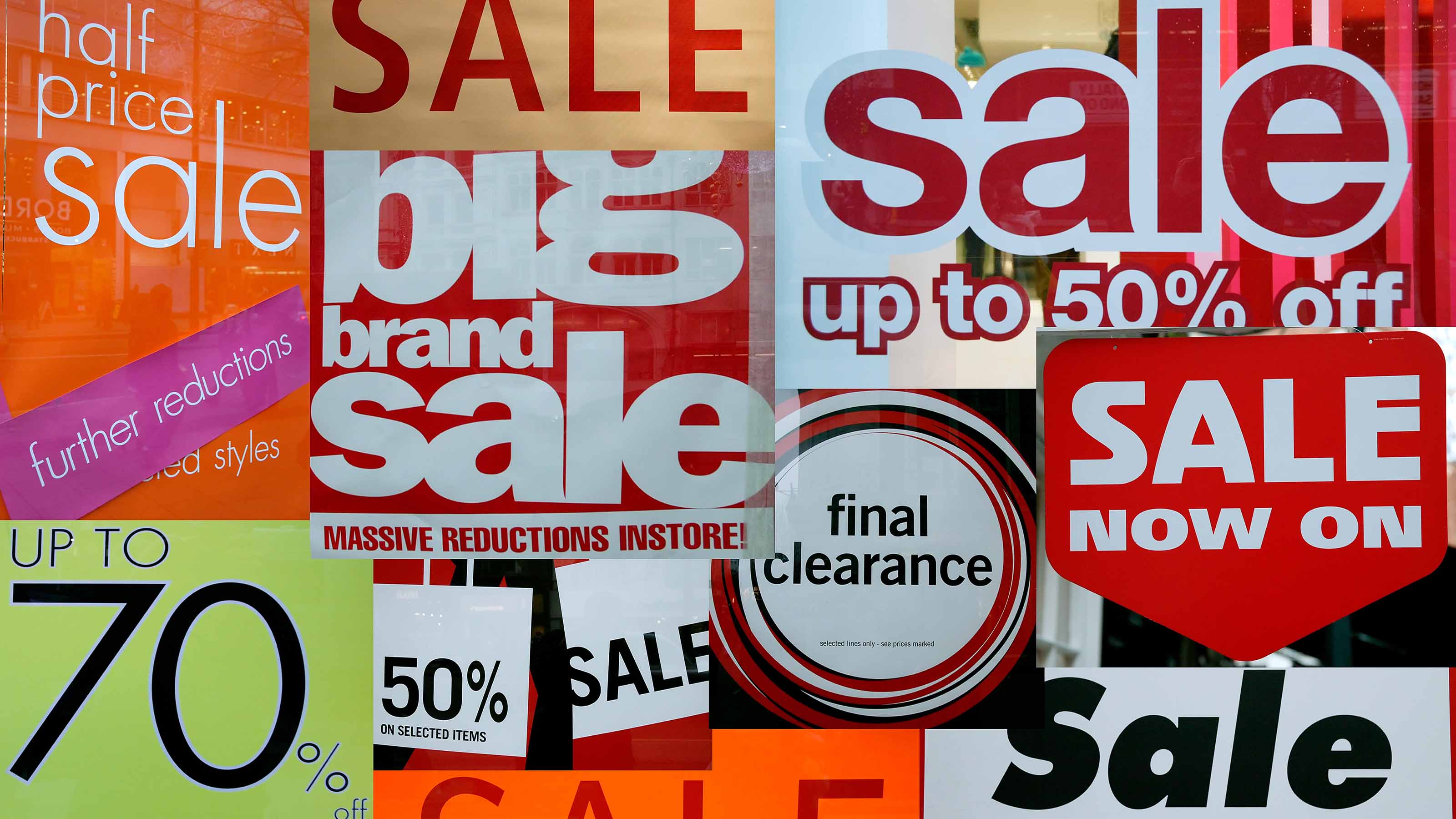My Best Bets for 2010
I've chosen these stocks because I expect them to outpace the market over the next 12 months.

For 11 of the past 15 years, I have offered readers of the Washington Post -- and, more recently, this magazine -- ten stock picks for the year ahead, selected from the choices of experts I respect. I took a break at the beginning of the century, cleverly timing my respite to coincide with the decade’s first bear market, and another at the start of 2009, when I went to work for the government. Unfortunately, I did not skip 2008, and I can now report that my recommendations were just as dismal as nearly everyone else’s.
My 2008 picks tumbled an average of 41.5%, while Standard & Poor’s 500-stock index lost 38.5% (not including dividends). Everything got clobbered -- from Transocean, a deep-water driller (which dropped 67%), to CarMax (down 60%), to Merck (off 45%). The best performer fell a mere 22% (more about that one later).
The gap narrows. Overall, I am still way ahead of the game. But, as I wrote in the February 2008 issue of Kiplinger’s, the concept of reversion to the mean is catching up with me. For example, between 2003 and 2006, my picks beat the S&P by an average of 18 percentage points per year, but in 2007 and 2008, they trailed the S&P by an average of 3.5 points a year.
From just $107.88 $24.99 for Kiplinger Personal Finance
Become a smarter, better informed investor. Subscribe from just $107.88 $24.99, plus get up to 4 Special Issues

Sign up for Kiplinger’s Free Newsletters
Profit and prosper with the best of expert advice on investing, taxes, retirement, personal finance and more - straight to your e-mail.
Profit and prosper with the best of expert advice - straight to your e-mail.
So, once more into the breach, with my traditional warnings: Although I usually object to any stock-investment strategy with such a short time horizon, I’ve chosen these stocks because I expect them to outpace the market over the next 12 months. The companies vary by sector and size, but they are not supposed to represent a truly diversified portfolio. Finally, these are merely suggestions. You should conduct your own research.
My best performer of 2008, Atrion (symbol ATRI), a medical-products company, lost 22%. It was the choice of Jay Weinstein, whose firm, Oak Forest Investment Management, in Bethesda, Md., specializes in small, undervalued companies. For the previous three years, Weinstein’s choices gained an average of 55%. Now, he’s come up with a true surprise: Dynex Capital (DX), a real estate investment trust that invests in mortgages. Chief executive Tom Akin is “a brilliant guy who took over what had been a catastrophe,” says Weinstein. “From 2005 to 2007, instead of buying assets, he was selling them” and using the proceeds to trim debt. Now, says Weinstein, Dynex is unleveraged and undervalued. He warns that Dynex is small (its market value is $107 million) and the shares aren’t very liquid, but he notes that the stock yields 11.6%.
The Value Line Investment Survey not only lays out salient features of a stock in a data-crammed page but also ranks expected performance for the year ahead, a system that has produced remarkably good results over the years. Among stocks it recently gave its top ranking for timeliness is a solid citizen called FactSet Research (FDS), a midsize company that supplies financial and economic statistics to investment firms. Earnings have risen in a beautiful line (as I like to call the pattern) for a decade, increasing each year, despite a couple of recessions, from 37 cents a share in 1999 to $2.97 for the year that ended August 31, 2009. The company has no debt and a lot of cash, and Value Line predicts that earnings will rise at an annual rate of 16% over the next five years.
Calamos Growth is a mutual fund with a stellar ten-year record (in the top 1% of Morningstar’s category for large-company growth funds) but with thrills and spills along the way. The fund lost 50% in 2008 but gained 45% in 2009 through November 6. Its second-biggest holding at last report was Apple (AAPL). Although the stock more than doubled in 2009, it may still have a ways to go; after all, Apple has just 9% of the U.S. computer market. Despite the poor economy, Apple’s sales jumped by more than 25% in the quarter that ended September 30 from the same period a year earlier, and earnings rose by nearly half.
The venerable, sensible and contrarian Turnaround Letter recommends Sysco (SYY), the largest food-service distributor in North America. Although sales in the quarter that ended September 26 fell 8% from the same period a year earlier, Sysco’s “financials look rock-solid,” writes publisher George Putnam III, who lauds Sysco as “a dominant company at a depressed price.” With a price-to-sales ratio of just 0.4 (the rule of thumb is that a P/S below 1.0 often designates a bargain), Sysco offers what Putnam calls a “conservative way to play a rebound in the restaurant industry” -- safer, certainly, than restaurant chains, which are notoriously risky. Plus, the stock yields 3.6%. (We like Sysco, too; see 8 Great Stocks for 2010.)
A star of the Wall Street Journal’s late, lamented stock-pickers-versus-dartboard contest, James Roumell runs Roumell Asset Management, a Chevy Chase, Md., investment firm that has solidly whipped the S&P 500 over the past five years. The most intriguing of his top three current selections is Pfizer (PFE), the world’s largest pharmaceutical firm. It makes Lipitor (to reduce cholesterol) and Norvasc (to lower blood pressure), among many other drugs. Roumell calls Pfizer a “huge cash-flow generator.” Ten years ago, the stock sold for $50. Today, it sells for $17, even though Pfizer’s earnings and revenues are nearly three times as great as they were in 1999. The shares yield 3.8% and trade at nearly eight times estimated 2010 earnings.
Contrarians, please note: In the first ten months of 2009, according to Lipper, utility funds were the worst-performing sector funds, with an average gain of 9%. I turned to one of my favorites, AIM Utilities, managed by Davis Paddock and Meggan Walsh, and was drawn to its tenth-largest holding, Exelon (EXC), the largest operator of nuclear power plants in the U.S. Says Morningstar: “Its ability to produce low-cost, carbon-free electricity should produce substantial, sustainable and growing shareholder value for many years, regardless of what path power prices take.” The stock yields 4.5%.
Bill Miller, the man with the longest hitting streak in the mutual fund business, is back. His fund, Legg Mason Value, beat the S&P 500 for 15 straight years before the streak ended in 2006. From that year through 2008, the fund trailed the S&P by an average of 15 percentage points per year. But Value rebounded in 2009, with a gain of 36% through November 6. With just 46 stocks at last report, Miller’s holdings are well worth examining. Among his top three was Sears Holdings (SHLD), a contrarian pick that has suffered through the recession but may be on the verge of a turnaround. The stock trades at about one-third of its April 2007 peak.
Will Danoff is a marvel. He runs Fidelity Contrafund, an unwieldy fund with $60 billion in assets and 413 stocks (and a member of the Kiplinger 25), but he produces consistently strong returns. Contra is in the top 4% of the large-company-growth category over the past ten years. Among his seven largest holdings, the only one that isn’t a megacap is Gilead Sciences (GILD), a biopharmaceutical firm (see Stocks that Grow in Any Climate). Among other things, the company has developed lifesaving HIV drugs and co-developed Tamiflu. Full disclosure: I know Gilead’s chief executive, a terrific leader named John Martin.
Toyota Motor (TM) may be the best auto company in the world, but it has been devastated by the recession. The stock, however, remains a large holding of the superb Fidelity International Discovery fund, managed by William Kennedy, so I am paying attention. Toyota lost $10 billion in the fiscal year that ended last March, so buying the stock is an exercise in what I call faith-based investing. Toyota is so well managed, has such a great brand, and has done so well in the past that the company is bound to turn around. (Toyota swung into the black during the July-September quarter.) Plus, it’s not owned by the government (neither ours nor Japan’s). The shares are down 43% from their February 2007 highs.
In the September 2009 issue of Kiplinger’s, I wrote enthusiastically about Chinese stocks and cited Matthews China fund as a good way to play them. among the fund, which sells education services in China, focusing on English-language teaching and test preparation. The shares have climbed 30% over the past year and, as a result, are a bit richer than my other choices. Still, the stock seems to me a good way to bet on China’s growth.
Now, it’s up to you.
James K. Glassman is executive director of the George W. Bush Institute, in Dallas. Of the stocks mentioned here, he owns shares of Gilead Sciences.
Profit and prosper with the best of Kiplinger's advice on investing, taxes, retirement, personal finance and much more. Delivered daily. Enter your email in the box and click Sign Me Up.

-
 Nasdaq Takes a Hit as the Tech Trade Falters: Stock Market Today
Nasdaq Takes a Hit as the Tech Trade Falters: Stock Market TodayThe Dow Jones Industrial Average outperformed on strength in cyclical stocks.
-
 $100 Fee Turning Away Visitors from National Parks
$100 Fee Turning Away Visitors from National ParksDiscover how the new $100 fee will impact your experience visiting 11 of America's most popular parks.
-
 Is Mechanical Breakdown Insurance Better Than an Extended Car Warranty?
Is Mechanical Breakdown Insurance Better Than an Extended Car Warranty?More insurers are starting to offer mechanical breakdown insurance to new car owners. What is it and should you buy it?
-
 5 Big Tech Stocks That Are Bargains Now
5 Big Tech Stocks That Are Bargains Nowtech stocks Few corners of Wall Street have been spared from this year's selloff, creating a buying opportunity in some of the most sought-after tech stocks.
-
 How to Invest for a Recession
How to Invest for a Recessioninvesting During a recession, dividends are especially important because they give you a cushion even if the stock price falls.
-
 10 Stocks to Buy When They're Down
10 Stocks to Buy When They're Downstocks When the market drops sharply, it creates an opportunity to buy quality stocks at a bargain.
-
 How Many Stocks Should You Have in Your Portfolio?
How Many Stocks Should You Have in Your Portfolio?stocks It’s been a volatile year for equities. One of the best ways for investors to smooth the ride is with a diverse selection of stocks and stock funds. But diversification can have its own perils.
-
 An Urgent Need for Cybersecurity Stocks
An Urgent Need for Cybersecurity Stocksstocks Many cybersecurity stocks are still unprofitable, but what they're selling is an absolute necessity going forward.
-
 Why Bonds Belong in Your Portfolio
Why Bonds Belong in Your Portfoliobonds Intermediate rates will probably rise another two or three points in the next few years, making bond yields more attractive.
-
 140 Companies That Have Pulled Out of Russia
140 Companies That Have Pulled Out of Russiastocks The list of private businesses announcing partial or full halts to operations in Russia is ballooning, increasing economic pressure on the country.
-
 How to Win With Game Stocks
How to Win With Game Stocksstocks Game stocks are the backbone of the metaverse, the "next big thing" in consumer technology.